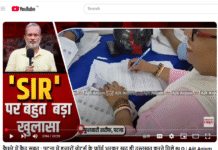The Editors Guild of India is deeply concerned to see Padma Shri awardee and editor of Shillong Times, Patricia Mukhim, being dragged through a cumbersome criminal charge procedure that is borne out of a complaint on one of her social media posts. The criminal complaint was filed in response to her Facebook post in July 2020 over a skirmish between tribal and non-tribal youth in Lawsohtun at a basketball court. Mukhim’s case is a reflection of the larger threats to freedom of speech in India, which operates under an unwieldy framework of laws that are often used indiscriminately by government and law enforcement agencies to muzzle dissent.
In her post, Mukhim claimed that the continued attacks on non-tribals had gone unpunished, which had turned Meghalaya into a failed state. The Dorbar Shnong (a Khasi tribal institution) perceived it as a divisive comment and filed a complaint with the police, which registered a criminal case under sections 153A/500/505C IPC (offenses promoting disharmony and enmity between different groups as well as criminal defamation) and asked her to present herself before the investigating officer. In her endeavor to seek legal remedy against the FIR, Mukhim went to the Meghalaya High Court, but the court, on November 10, refused to quash the criminal proceedings.
Mukhim’s case is an example of how multiple legal provisions can be used against free speech and, therefore against free press. Several provisions across multiple laws give a handle to government agencies and law enforcement authorities to lodge criminal cases against journalists wherein the criminal complaint procedure itself becomes an exacting punishment and acts as deterrent against exercise of free speech. The media’s prime responsibility is to question the affairs of the government and report information, however harsh and disturbing it may be. They cannot be held liable for relaying information that may bring to fore details on fault lines within the society, or for that matter, mismanagement and corruption in government affairs.
Editors Guild of India underlines the need for the higher judiciary to take cognizance of these crucial issues that impede freedom of speech and issue guidelines to ensure that wanton use of laws does not serve as a deterrent to a free press.
Seema Mustafa, president, Editors Guild of India
Sanjay Kapoor, general secretary, Editors Guild of India
Anant Nath, treasurer, Editors Guild of India
















